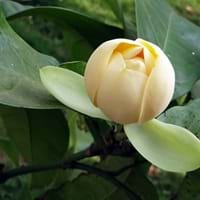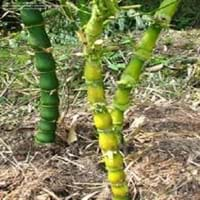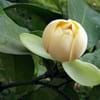Life Span
Perennial
Perennial
Origin
Cambodia, China, India, Indonesia, Papua New Guinea, Philippines, Singapore, Thailand, Viet Nam
China, Japan
Types
Magnolia angatensis, Magnolia beccarii, Magnolia championii
Slender Weavers Bamboo, Golden Buddha's Belly Bamboo, Painted Bamboo
Habitat
Wide range of ecological site
Subtropical climates, Subtropical forests
USDA Hardiness Zone
10-15
9-11
AHS Heat Zone
Not Available
12 - 9
Sunset Zone
Not Available
H1, 18, 19, 20, 21, 22, 23, 24
Habit
Oval or Rounded
Clump-Forming
Flower Color
Gold, White, Yellow
Red
Flower Color Modifier
Bicolor
Bicolor
Leaf Color in Spring
Green
Dark Green
Leaf Color in Summer
Green
Light Green
Leaf Color in Fall
Green, Yellow green
Dark Green
Leaf Color in Winter
Gray Green
Dark Green
Plant Season
Spring, Summer
Spring, Summer, Fall, Winter
Sunlight
Full Sun, Partial Sun
Full Sun, Partial Sun, Partial shade
Type of Soil
Clay, Loam
Clay, Loam, Sand
The pH of Soil
Acidic, Neutral
Acidic, Neutral, Alkaline
Soil Drainage
Well drained
Average
Bloom Time
Spring, Late Spring
Not Available
Tolerances
Not Available
Not Available
Where to Plant?
Ground
Container, Ground
How to Plant?
Seedlings, Transplanting
Divison
Plant Maintenance
Medium
Medium
Watering Requirements
Prefer drip-irrigation instead of Over-head watering
Allow to dry out slightly between watering, Needs 2-3 times watering per week, Requires watering in the growing season, Water Deeply, Water when soil is dry
In Summer
Lots of watering
Lots of watering
In Spring
Moderate
Moderate
In Winter
Average Water
Less Watering
Soil pH
Acidic, Neutral
Acidic, Neutral, Alkaline
Soil Type
Clay, Loam, Sand
Clay, Loam, Sand
Soil Drainage Capacity
Well drained
Average
Sun Exposure
Full Sun, Partial Sun
Full Sun, Partial Sun, Partial shade
Pruning
Prune if you want to improve plant shape
Cut the culms, Remove damaged leaves, Remove dead branches, Remove dead leaves, Remove dead or diseased plant parts
Fertilizers
Fertilize in late fall, fertilize in spring, Requires high amount of nitrogen
All-Purpose Liquid Fertilizer, fertilize in growing season
Pests and Diseases
Aphids, Bacterial Blight, Canker, Crown gall, Hoplia beetle, Leaf burn, Leaf spot, Mealybugs, Powdery mildew, Red blotch, Scorch, Soft scales, Thripes, Wetwood
Red blotch
Plant Tolerance
Not Available
Not Available
Flower Petal Number
Single
Single
Foliage Texture
Coarse
Medium
Foliage Sheen
Matte
Matte
Attracts
Not Available
Butterflies, Mites
Allergy
Not Available
Pollen, Rash
Aesthetic Uses
Showy Purposes
Bonsai
Beauty Benefits
Treatment of Dark Spots
Good for skin and hair, Not Available
Environmental Uses
Air purification
Air purification
Medicinal Uses
Alzheimer’s Disease, Anxiety, Cancer, Digestion problems, Liver problems, Menstrual Cramps, Respiratory Disorders, Weight loss
Healthy teeth, Pain in gums
Part of Plant Used
Whole plant
Sap, Stem
Other Uses
Used as Ornamental plant, Used for its medicinal properties
Container, Espalier, Screen, Used in paper industry
Used As Indoor Plant
Yes
Insignificant
Used As Outdoor Plant
Yes
Yes
Garden Design
Feature Plant, Foundation, Shade Trees
Container, Feature Plant, Screening / Wind Break, Topiary / Bonsai / Espalier, Tropical
Botanical Name
Magnolia liliifera
BAMBUSA ventricosa
Common Name
Egg magnolia
Buddha's Belly Bamboo, Clumping Bamboo, Ventricose Bamboo
In Hindi
Magnolia liliifera
बुद्ध के पेट बांस
In German
Magnolia Liliifera
Buddhas Bauch Bambus
In French
Magnolia Liliifera
Le Bamboo Belly de Bouddha
In Spanish
Magnolia Liliifera
De bambú del vientre de Buda
In Greek
Magnolia Liliifera
Κοιλιά Μπαμπού Βούδα
In Portuguese
Magnolia Liliifera
Bamboo barriga de Buda
In Polish
Magnolia Liliifera
Buddy Belly Bamboo
In Latin
Magnolia Liliifera
Buddha ventre Bamboo
Phylum
Tracheophyta
Magnoliophyta
Class
Magnoliopsida
Liliopsida
Family
Magnoliaceae
Poaceae
Clade
Angiosperms, Magnoliids
Angiosperms, Commelinids, Monocots
Tribe
Not Available
Bambuseae
Subfamily
Not Available
Bambusoideae
Number of Species
Not Available
Not Available
Importance of Magnolia Liliifera and Buddha's Belly Bamboo
Want to have the most appropriate plant for your garden? You might want to know the importance of Magnolia Liliifera and Buddha's Belly Bamboo. Basically, these two plants vary in many aspects. Compare Magnolia Liliifera and Buddha's Belly Bamboo as they differ in many characteristics such as their life, care, benefits, facts, etc. Every gardener must at least have the slightest clue about the plants he wants to plant in his garden. Compare their benefits, which differ in many ways like facts and uses. The medicinal use of Magnolia Liliifera is Alzheimer’s Disease, Anxiety, Cancer, Digestion problems, Liver problems, Menstrual Cramps, Respiratory Disorders and Weight loss whereas of Buddha's Belly Bamboo is Healthy teeth and Pain in gums. Magnolia Liliifera has beauty benefits as follows: Treatment of Dark Spots while Buddha's Belly Bamboo has beauty benefits as follows: Treatment of Dark Spots.
Compare Facts of Magnolia Liliifera vs Buddha's Belly Bamboo
How to choose the best garden plant for your garden depending upon its facts? Here garden plant comparison will help you to solve this query. Compare the facts of Magnolia Liliifera vs Buddha's Belly Bamboo and know which one to choose. As garden plants have benefits and other uses, allergy is also a major drawback of plants for some people. Allergic reactions of Magnolia Liliifera are Not Available whereas of Buddha's Belly Bamboo have Pollen and Rash respectively. Having a fruit bearing plant in your garden can be a plus point of your garden. Magnolia Liliifera has no showy fruits and Buddha's Belly Bamboo has no showy fruits. Also Magnolia Liliifera is not flowering and Buddha's Belly Bamboo is not flowering . You can compare Magnolia Liliifera and Buddha's Belly Bamboo facts and facts of other plants too.





